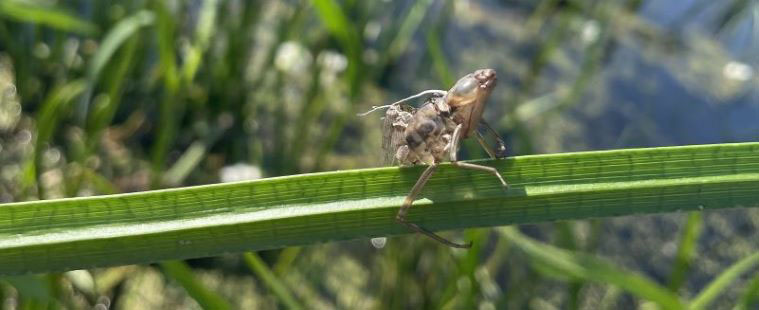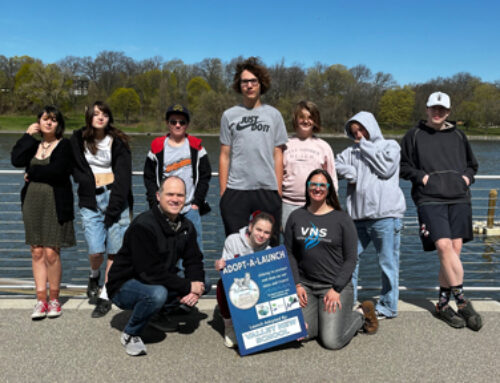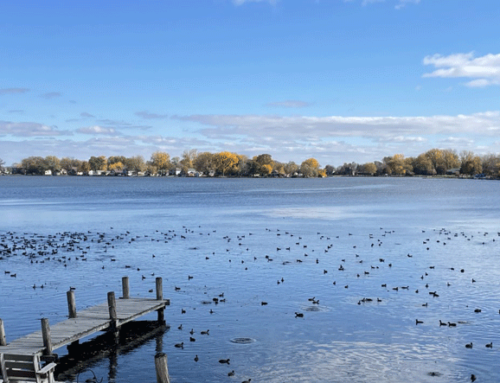While there are many dragonfly species that call Wisconsin home, this month’s species spotlight focuses on the early life stage of dragonflies: dragonfly larvae! Also known as a nymph, these “baby” dragonflies hatch from an egg that is laid in the water. They remain in a larval stage for a few months to a few years, depending on what species of dragonfly it will grow into. Dragonfly larvae usually aren’t as brightly colored as adult dragonfly. The larvae have 6 legs, large eyes, and breathe by using gills located on their hind end. Depending on the age and species of dragonfly, the larvae range from 0.25 inches to 2.5 inches long.
Dragonfly larvae molt as they grow bigger, and if you look closely around your local lake, stream, or pond, you may be able to find the exoskeletons left behind on reeds or lily pads. Though dragonfly larvae are small, they are quite fierce and are effective predators. They eat smaller insects, mosquito larvae, and even small crustaceans. Dragonfly larvae can help us monitor water quality, because they can be used as a biological indicator, meaning they are only found under specific water quality circumstances. Typically, they are found in water that has good water quality because they are semi-sensitive to pollutants.
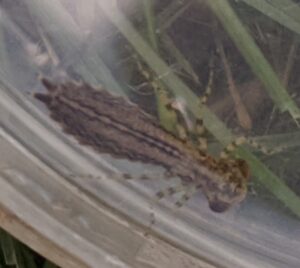
A live dragonfly larvae collected from a stream (K. Reed)
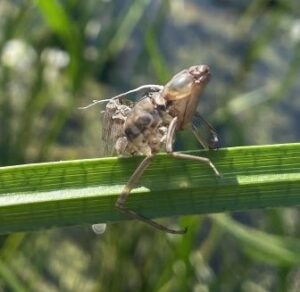
A dragonfly molt left behind on an aquatic plant (K. Doering)
Article written by Katie Reed, Winnebago Waterways Coordinator: katherine@fwwa.org
Sources:
Dragonflies: Wisconsin’s Aerial Acrobats – EEK Wisconsin
Winnebago Waterways is a Fox-Wolf Watershed Alliance recovery initiative. Contact us at wwinfo@fwwa.org


